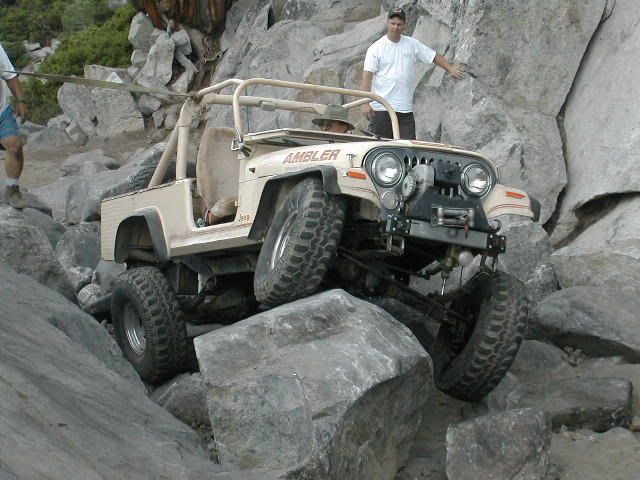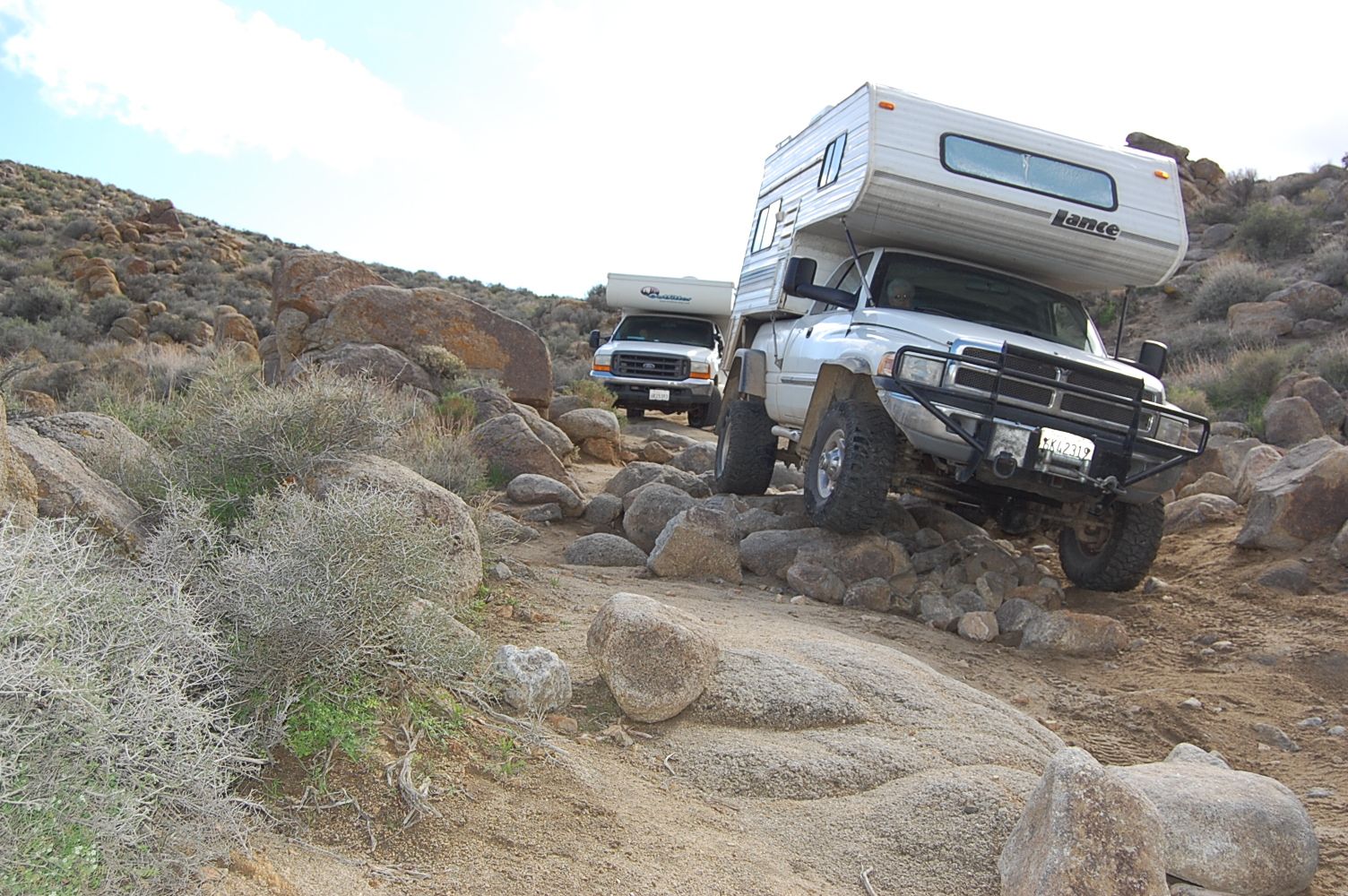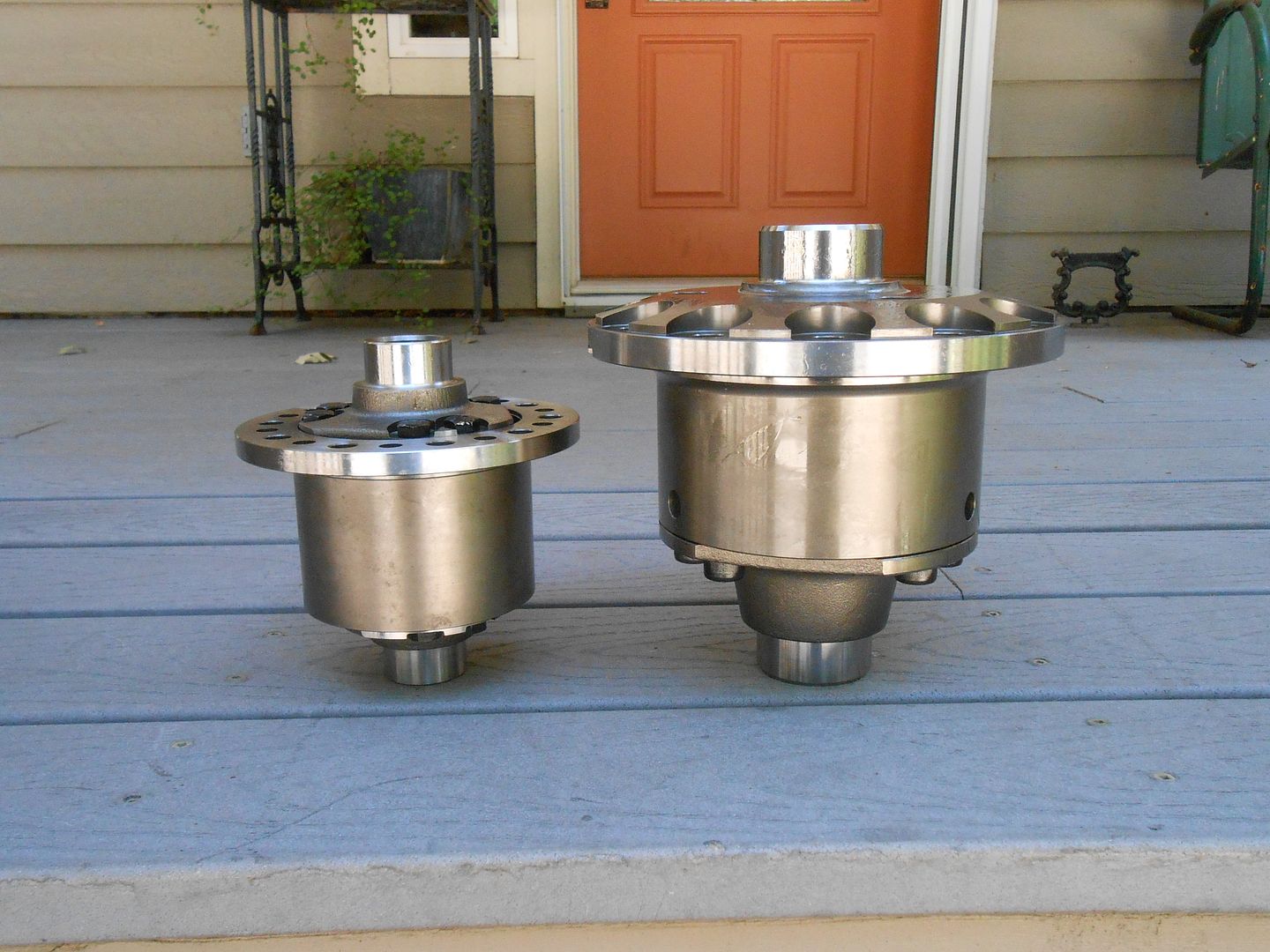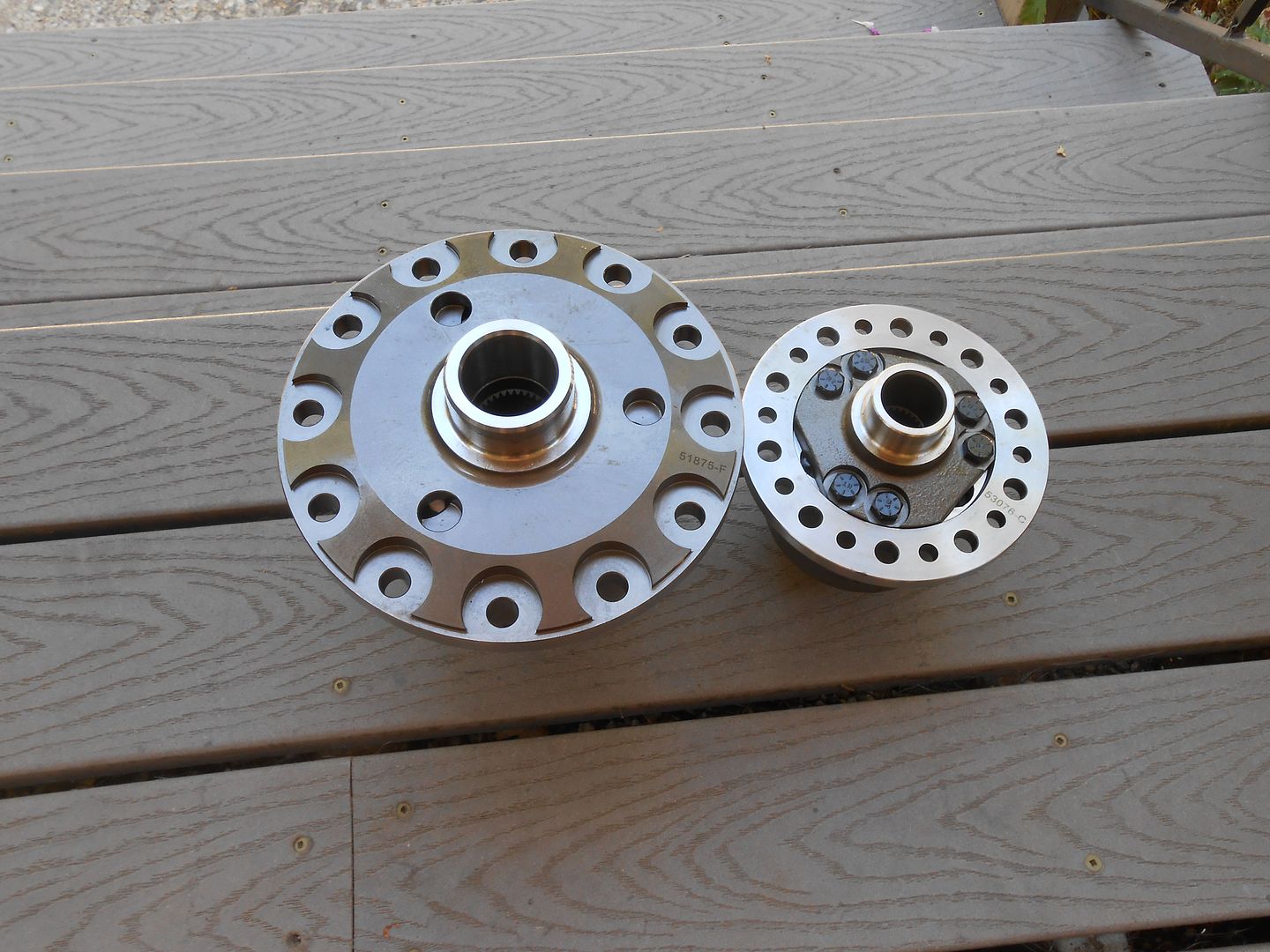MikeHenderson
Active member
On a recent group trip we came across a perfect natural experiment to see how OPEN DIFFERENTIALS, LOCKERS, and TRACTION CONTROL handle the same obstacle. I got video of it all and you can see that below. Here are my thoughts on what we saw:
How A Differential Works
Here's the best video I've seen illustrating how a differential works. Check it out:
The Experiment
OK so in a remote canyon in northern nevada, we came across the perfect spot to illustrate how each of these things work. It was a turn through a loose rutted of camber sluice.
It forced everyone into a Cross Axle situation where front passenger and rear driver wheels were up and the other corners were down in loose sand.
Now, because of the way differentials work, this brings even a four wheel drive vehicle right to a stop. So, let’s take a look at how we did.
Open Differentials

In the first clip, David enters the turn and immediately is unable to move forward due to the classic cross-axle on his open differentials. His front passenger is up and the rear driver is up and the other corners are down and mostly unloaded.
The loose sand is just getting flung out of the way and no power is going to the wheels with traction. With a closer look you can see how the rear tire is stuffed and the front is hanging.
In a situation like this there’s plenty of room to re-position and that will keep the vehicle balanced better.
on the new line the problem is still there, but it is less severe and he’s able to finesse his way through.
Let’s back up a second. In the video you may have heard Shawn say, "tap your brakes!"
This is a trick that sometimes works that simulates a computer controlled traction control system.
Traction Control

In the video, Nate drives through the same obstacle in his Tundra with 4-Wheel Camper and suffers from the same differential phenomenon.
But this Tundra has Traction Control. With Traction Control a computer senses that one wheel isn’t getting traction and uses the brake selectively to slow it down.
If you go back to that Explainer vide you can see that the differential uses one wheel as leverage for the other. When one wheel spins without resistance, there is no leverage for the other wheel.
To get past this Traction Control clamps down on the spinning wheel to apply leverage to the other one.
Let’s back up again.
Here’s what I think is happening here with Nate's Tundra. He hits the cross axle, slips, stays on the throttle until the traction control kicks in and now the front wheel is way off the ground and he backs off.
At this point the traction control disengages and he has to start over.
Throttle on, tire slips, traction control engages, truck bucks, throttle off.
As you can see from the difficulties Nate is having here, Traction control is still problematic in a cross axle situation.
Nate was smart to back off before the truck bucked too hard risking bashing into that sand bank, or worse, rolling the heavy vehicle, which is definitely a risk here.
Nate finessed the traction control with low throttle until he got it to engage slowly and smoothly.
Incidentally, almost everyone tended to turn away from the bank here. But the off camber was enough to potentially roll them over. So watch out for situations like this and be mindful.
Lockers

So my 4Runner has a factory installed Electronic Locking differential that I can turn on and off with a button on the dash. This basically turns off the differential so that both wheels turn the same no matter what and they work great in situations like this.
So you can see as I come into the obstacle I immediately lose traction and roll back. So I hit the button and locked the axle. Then, no problem, even though one front wheel is up, the rear has enough traction to push it through. This is a good tool to have because I can use the low gearing and low RPM to just slowly crawl through at a smooth and even pace. No bouncing of bucking.

I’ll show you Ron’s pass in his JK Rubicon just to show that even solid axle vehicles aren’ immune to this either. He spins out same place we did.
Since this is a rubicon, at first I thought he turned his lockers on, but on closer inspection I think this is the Jeep Traction control.
Right there. See how the wheel spins a little and then catches? If you know more about Jeep Traction Control post a comment and let me know what you think is going on here.
Side Note

Now before you go out and weld your diff, you should know that most of the time it’s good to have an open differential. I am constantly locking and unlocking, only using it when I need it. That’s because it can be really hard to turn with the locker on. Watch how the 4Runner is pushed straight with the wheels cranked to driver.
How A Differential Works
Here's the best video I've seen illustrating how a differential works. Check it out:
The Experiment
OK so in a remote canyon in northern nevada, we came across the perfect spot to illustrate how each of these things work. It was a turn through a loose rutted of camber sluice.
It forced everyone into a Cross Axle situation where front passenger and rear driver wheels were up and the other corners were down in loose sand.
Now, because of the way differentials work, this brings even a four wheel drive vehicle right to a stop. So, let’s take a look at how we did.
Open Differentials

In the first clip, David enters the turn and immediately is unable to move forward due to the classic cross-axle on his open differentials. His front passenger is up and the rear driver is up and the other corners are down and mostly unloaded.
The loose sand is just getting flung out of the way and no power is going to the wheels with traction. With a closer look you can see how the rear tire is stuffed and the front is hanging.
In a situation like this there’s plenty of room to re-position and that will keep the vehicle balanced better.
on the new line the problem is still there, but it is less severe and he’s able to finesse his way through.
Let’s back up a second. In the video you may have heard Shawn say, "tap your brakes!"
This is a trick that sometimes works that simulates a computer controlled traction control system.
Traction Control

In the video, Nate drives through the same obstacle in his Tundra with 4-Wheel Camper and suffers from the same differential phenomenon.
But this Tundra has Traction Control. With Traction Control a computer senses that one wheel isn’t getting traction and uses the brake selectively to slow it down.
If you go back to that Explainer vide you can see that the differential uses one wheel as leverage for the other. When one wheel spins without resistance, there is no leverage for the other wheel.
To get past this Traction Control clamps down on the spinning wheel to apply leverage to the other one.
Let’s back up again.
Here’s what I think is happening here with Nate's Tundra. He hits the cross axle, slips, stays on the throttle until the traction control kicks in and now the front wheel is way off the ground and he backs off.
At this point the traction control disengages and he has to start over.
Throttle on, tire slips, traction control engages, truck bucks, throttle off.
As you can see from the difficulties Nate is having here, Traction control is still problematic in a cross axle situation.
Nate was smart to back off before the truck bucked too hard risking bashing into that sand bank, or worse, rolling the heavy vehicle, which is definitely a risk here.
Nate finessed the traction control with low throttle until he got it to engage slowly and smoothly.
Incidentally, almost everyone tended to turn away from the bank here. But the off camber was enough to potentially roll them over. So watch out for situations like this and be mindful.
Lockers

So my 4Runner has a factory installed Electronic Locking differential that I can turn on and off with a button on the dash. This basically turns off the differential so that both wheels turn the same no matter what and they work great in situations like this.
So you can see as I come into the obstacle I immediately lose traction and roll back. So I hit the button and locked the axle. Then, no problem, even though one front wheel is up, the rear has enough traction to push it through. This is a good tool to have because I can use the low gearing and low RPM to just slowly crawl through at a smooth and even pace. No bouncing of bucking.

I’ll show you Ron’s pass in his JK Rubicon just to show that even solid axle vehicles aren’ immune to this either. He spins out same place we did.
Since this is a rubicon, at first I thought he turned his lockers on, but on closer inspection I think this is the Jeep Traction control.
Right there. See how the wheel spins a little and then catches? If you know more about Jeep Traction Control post a comment and let me know what you think is going on here.
Side Note

Now before you go out and weld your diff, you should know that most of the time it’s good to have an open differential. I am constantly locking and unlocking, only using it when I need it. That’s because it can be really hard to turn with the locker on. Watch how the 4Runner is pushed straight with the wheels cranked to driver.




